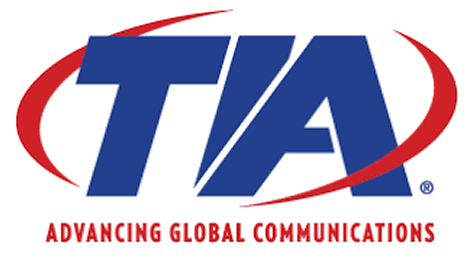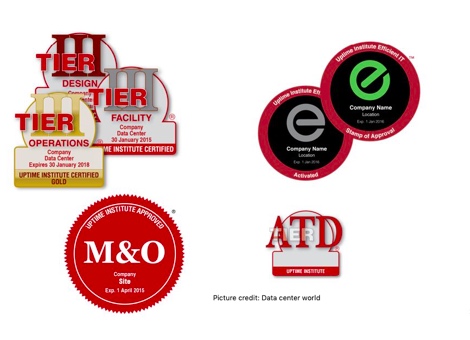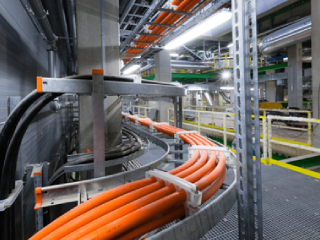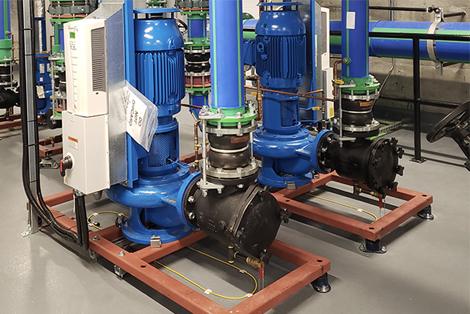The Uptime Institute

TIA-942

A Side-by-Side Look
Tier I
Uptime Institute Standard
-
Planned or unplanned actions might cause disruptions.
-
Power and cooling are distributed in a single channel. N+0 = no redundancy.
-
For outages and power spikes, there’s a generator and a UPS.
-
A minimum of 12 hours of generator running time is required.
-
Maintenance necessitates a complete shutdown.
TIA-942 Standard
-
Planned or unplanned actions might cause disruptions.
-
Power and cooling are distributed in a single channel. N+0 = no redundancy.
-
An elevated floor, UPS, or generator may or may not be present.
-
A total of 28.8 hours of downtime are scheduled per year.
-
Maintenance necessitates a complete shutdown.
-
The availability rate is 99.671%.
Tier II
Uptime Institute Standard
-
Planned or unplanned action is less likely to cause interruption.
-
Generators, UPS, energy storage, chillers, heat rejection, pumps, cooling, and fuel tanks are like N+1 components with a single path for power and cooling.
-
Included are a UPS and a generator with a 12-hour fuel supply.
-
Maintenance of redundant components can be performed without causing any disturbance. However, maintenance on distribution paths may necessitate a shutdown.
TIA-942 Standard
-
Planned or unplanned action is less likely to cause interruption.
-
N+1 = contains redundant components in a single power and cooling channel. There’s also a Raised floor, a UPS, and a generator.
-
A total of 22 hours of downtime is scheduled each year.
-
Shutdown may be required for power path and backbone maintenance.
-
The availability rate is 99.741%.
Tier III
Uptime Institute Standard
-
Normal operations will not be disrupted, but unplanned activities or human mistakes may.
-
There are many power and cooling distribution paths. However, there’s only one operational at any given time redundancy N+1.
-
Every piece of IT equipment is dual-powered or has a transfer device. Every “N” capacity includes a UPS and a generator with 12 hours of fuel.
-
When any component of the distribution path is removed for maintenance, the system continues to function.
TIA-942 Standard
-
Normal business activities will not be disrupted, but unanticipated incidents may.
-
There are many power and cooling distribution paths. However, there’s only one operational at any given time redundancy N+1.
-
1.6 hours of downtime each year
-
The ability to maintain full operation while performing maintenance on the power path or backbone is included, as well as a raised floor.
-
Availability rate of 99.982%.
Tier IV
Uptime Institute Standard
-
Normal activities do not disrupt key operations; any component can fail with no consequences.
-
Multiple power and cooling distribution pathways, each of which is autonomous, diversified, and active at the same time have physical barrier N+1 redundancy
-
Cooling must be maintained at all times. For “N” capacity, UPS and generators must have 12 hours of fuel.
-
Without compromising the key systems, each component can be taken out of operation for repair.
TIA-942 Standard
-
Normal activities do not disturb vital operations; at least one unanticipated incident can occur with no consequences.
-
There are multiple paths for electricity and cooling distribution. 2(N+1) redundancy – each UPS has N+1 capacity.
-
0.4 hours of downtime per year Includes a raised floor and the capacity to keep the business running during maintenance.
-
The availability rate is 99.995%.
Monitoring The Tier Level
Downtime in the data center can mean lost credibility, lost revenue, and lost clients. Therefore, quick responses to faults are necessary to ensure services relying on them are restored at the earliest. AKCP assures the earliest possible detection of any out-of-threshold occurrence.
AKCPro Server is our world-class central monitoring and management DCIM software. Suitable for a wide range of monitoring applications. Free to use for all AKCP devices. Monitor your infrastructure, whether it be a single building or remote sites over a wide geographic area. Integrate third-party devices with, Modbus, SNMP, and ONVIF compatible IP cameras.
Environmental Monitoring
The hardware infrastructure for your data center should be set up with adequate sensors to monitor all your temperature, humidity, airflow, water leak, and other environmental. The physical condition of cooling units should be monitored at all times. Configure rack maps to show the thermal properties of your computer cabinet, check the temperature at the top, middle, bottom, front, and rear, as well as temperature differentials.
Power Monitoring
Monitor single-phase, three-phase, generators, and UPS battery backup power. AKCP Pro Server performs live Power Usage effectiveness (PUE) calculations so you have a complete overview of your power train and how adjustments in your data center directly impact your PUE.
Security Monitoring
A random person can not just walk into any data center property. May it be your own data center facility or a colocation facility, ensure that your facilities and critical infrastructure are secured. Door contact sensors, audible and visual alarms are configured and managed from your custom desktops in APS. All of these with CCTV, surveillance guards, security RFID card-based access to internal facilities, and alarms are means to monitor your data center surroundings.
Datacenter monitoring is a critical part of maintaining your data center and hence should be part of your overall data center strategy.
Reference Links:
https://www.endvawnow.org/
https://lifelinedatacenters.com/data-center/why-data-center-monitoring-is-essential/
https://www.hpe.com/us/en/what-is/data-center-tiers.html#:~:text=Data%20center%20tiers%20are%20a,all%20the%20tiers%20below%20it.
https://www.endvawnow.org/en/articles/331-why-is-monitoring-and-evaluation-important.html





